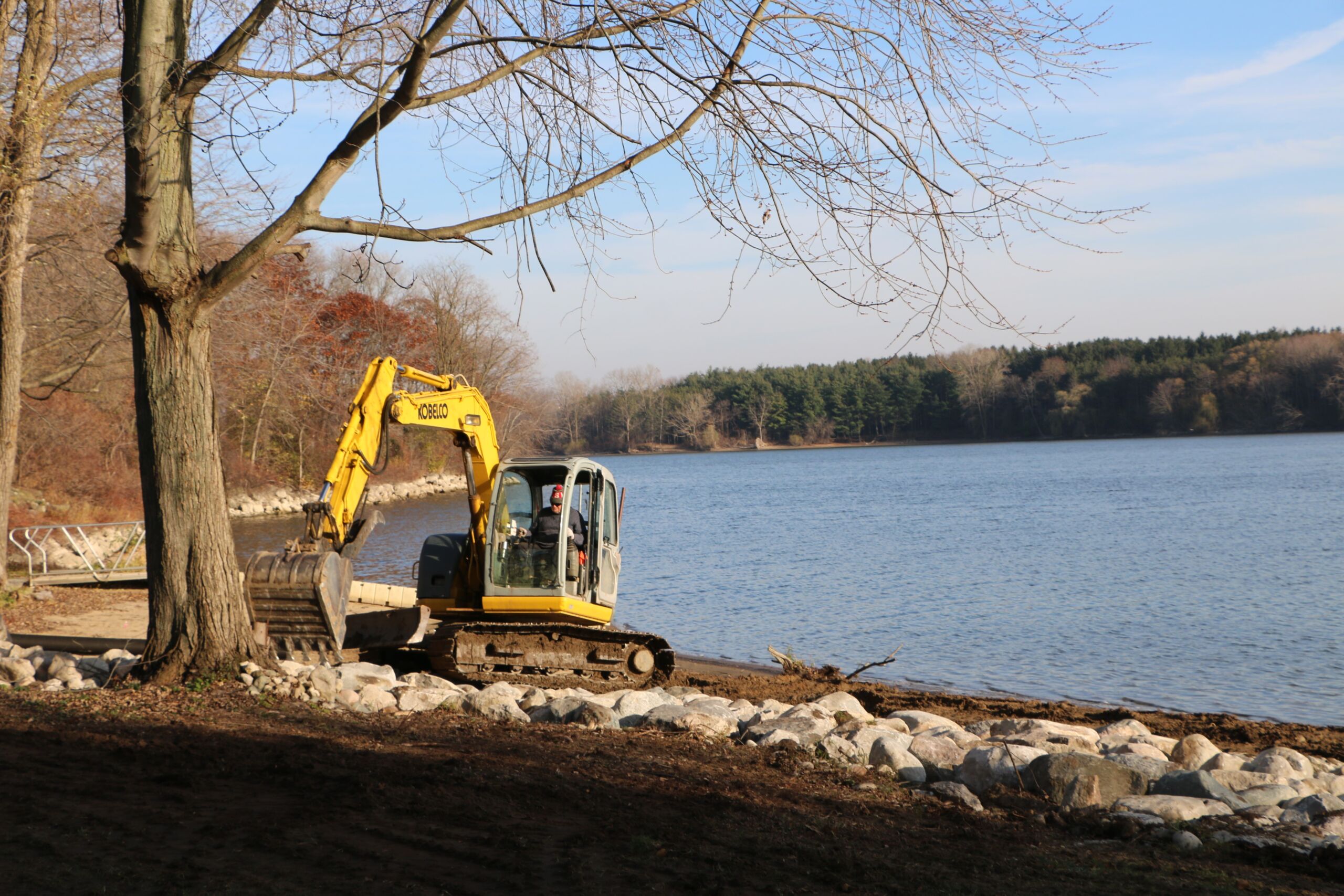Shoreline Erosion Control at Pittock Conservation Area
Have you seen boulders being placed along the shoreline of Pittock Reservoir?
Those large rocks will help hold the land in place, preventing erosion and improving water quality. At the same time, when the water level rises in the spring, the rocks will create a more complex habitat, offering different niches and environmental conditions that support the varied needs of fish and benthic macro-invertebrates.
Some aquatic insects, like mayflies or caddisflies, may use the rocks as a substrate for laying eggs. Adult invertebrates like the Northern Clearwater Crayfish might find refuge among the rocks, as the spaces between rocks can serve as hiding places. Spaces between large rocks can also provide shelter and protection for juvenile and forage fish, helping them avoid predators. Rock Bass, as their name suggests, often take cover under and around large rocks. Bottom-dwelling fish species like Brown Bullhead and White Sucker also find shelter and feeding opportunities around the rocks. Northern Pike, a predatory species, may use the rocky structures to ambush prey.
Some fish species recorded at Pittock CA:
- Northern Pike
- Yellow Perch
- Largemouth Bass
- Smallmouth Bass
- Rock Bass
- Bluegill
- Northern Sunfish (Species at Risk listed as Special Concern)
- Black Crappie
- Greenside Darter
- Johnny Darter
- Brown Bullhead
- White Sucker
Invertebrates:
- Northern Clearwater Crayfish
Mussels:
- Rainbow
For more info, email Damian Schofield, Conservation Areas Coordinator
Learn more and see the project in action:


